
How to Use ZE07 H2 Gas Sensor: Examples, Pinouts, and Specs
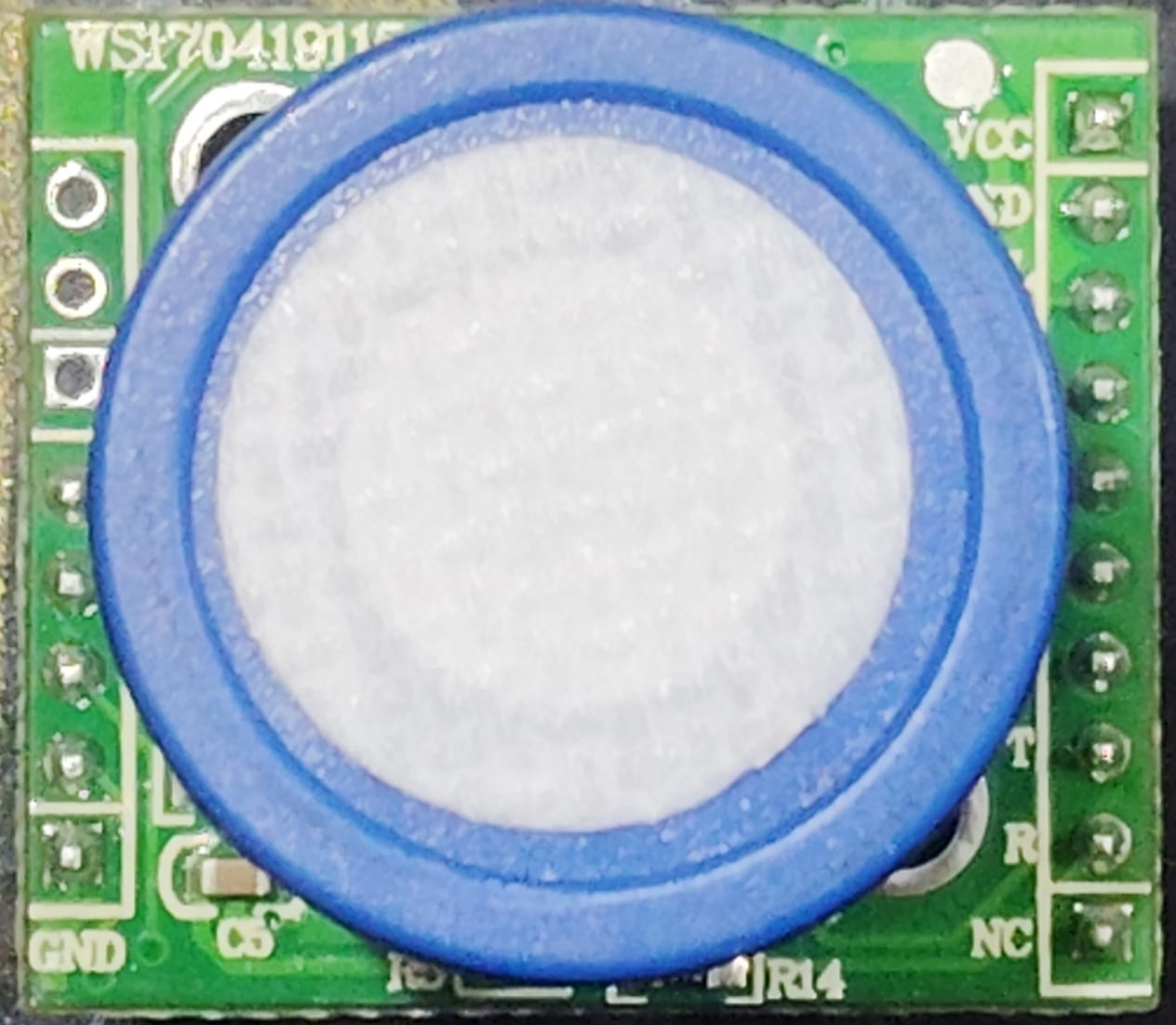
 Design with ZE07 H2 Gas Sensor in Cirkit Designer
Design with ZE07 H2 Gas Sensor in Cirkit DesignerIntroduction
The ZE07 H2 Gas Sensor, manufactured by Winsen (Part ID: ZE07-h2), is a compact and highly sensitive device designed to detect hydrogen gas (H2) concentrations in the air. It operates on the principle of electrochemical sensing, ensuring accurate and reliable measurements. This sensor is widely used in safety monitoring systems, industrial applications, and environmental monitoring to detect hydrogen leaks and ensure safe operating conditions.
Explore Projects Built with ZE07 H2 Gas Sensor
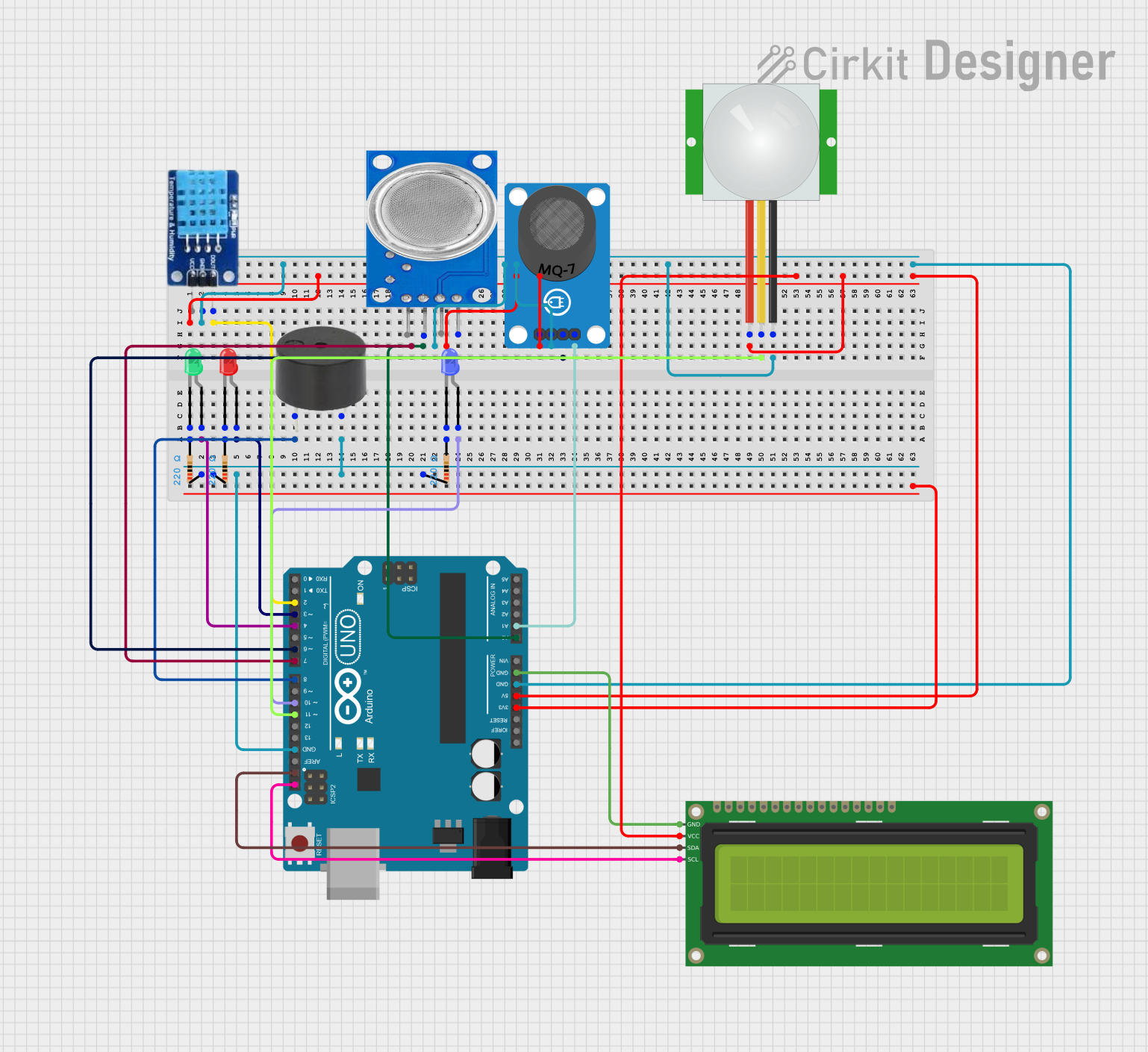
 Open Project in Cirkit Designer
Open Project in Cirkit Designer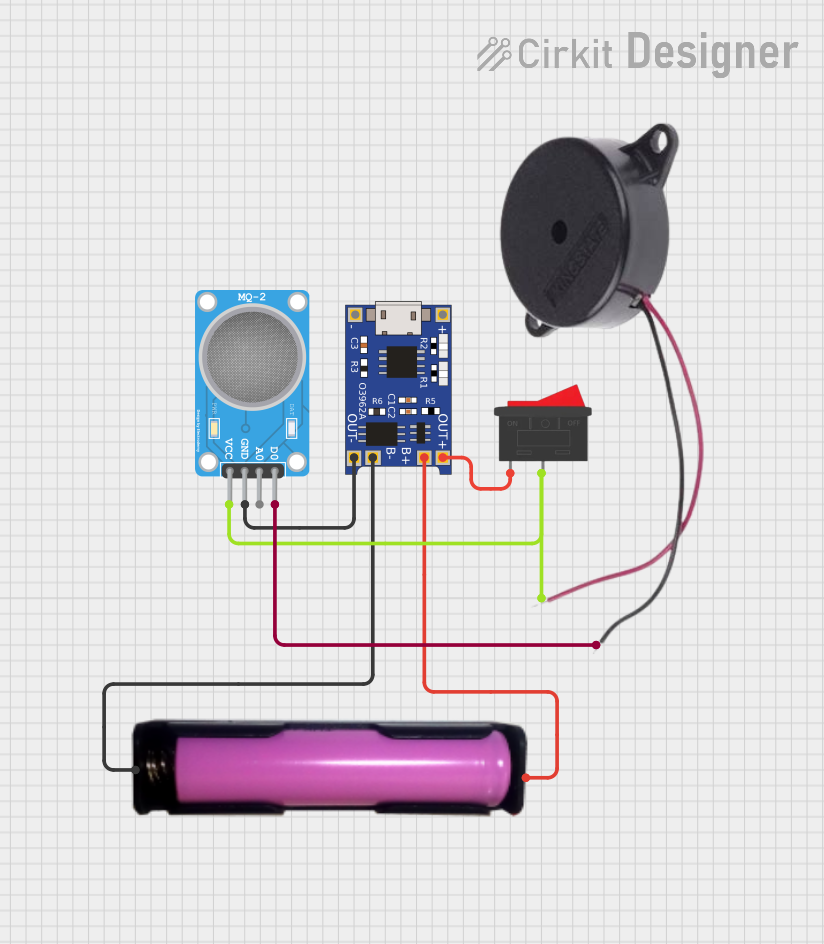
 Open Project in Cirkit Designer
Open Project in Cirkit Designer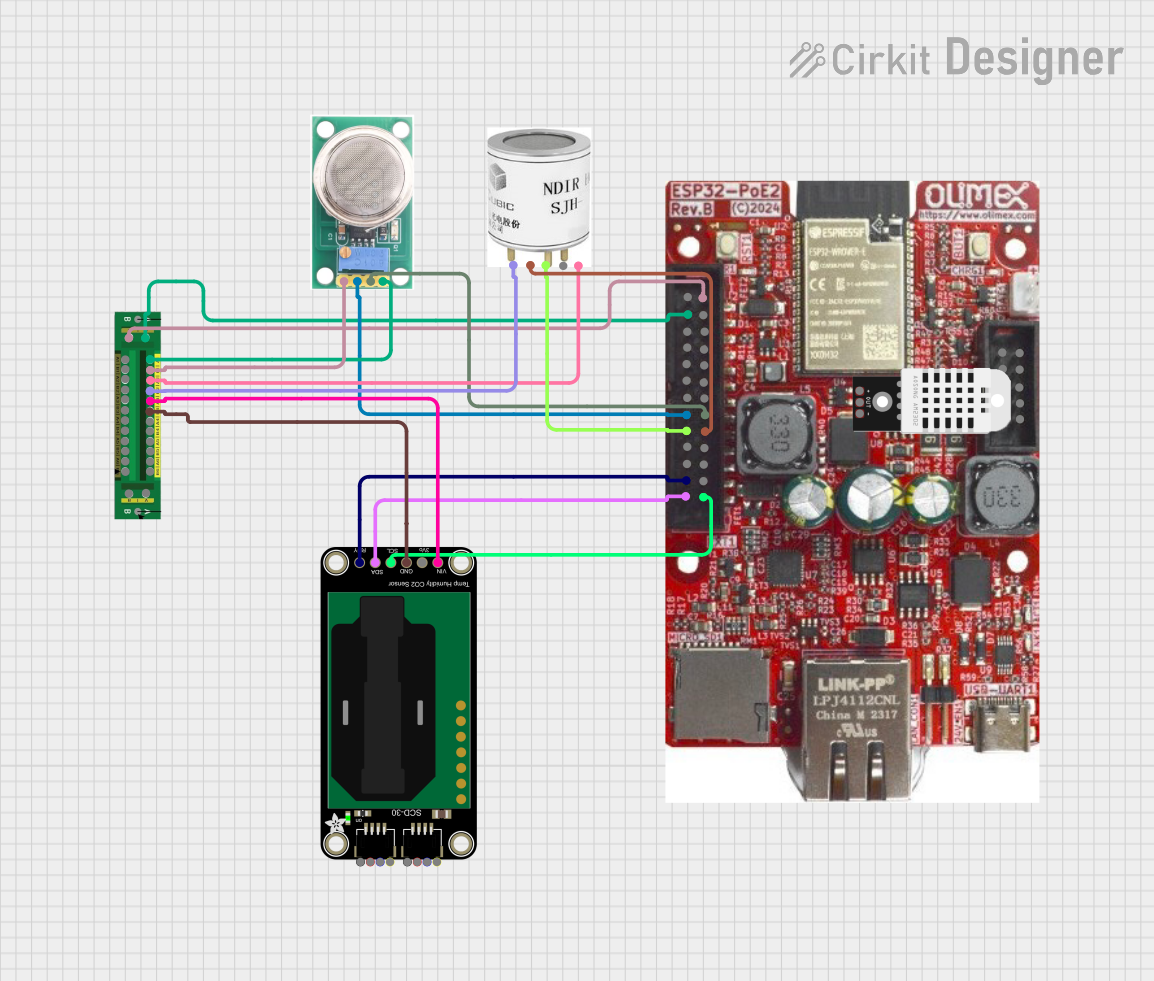
 Open Project in Cirkit Designer
Open Project in Cirkit Designer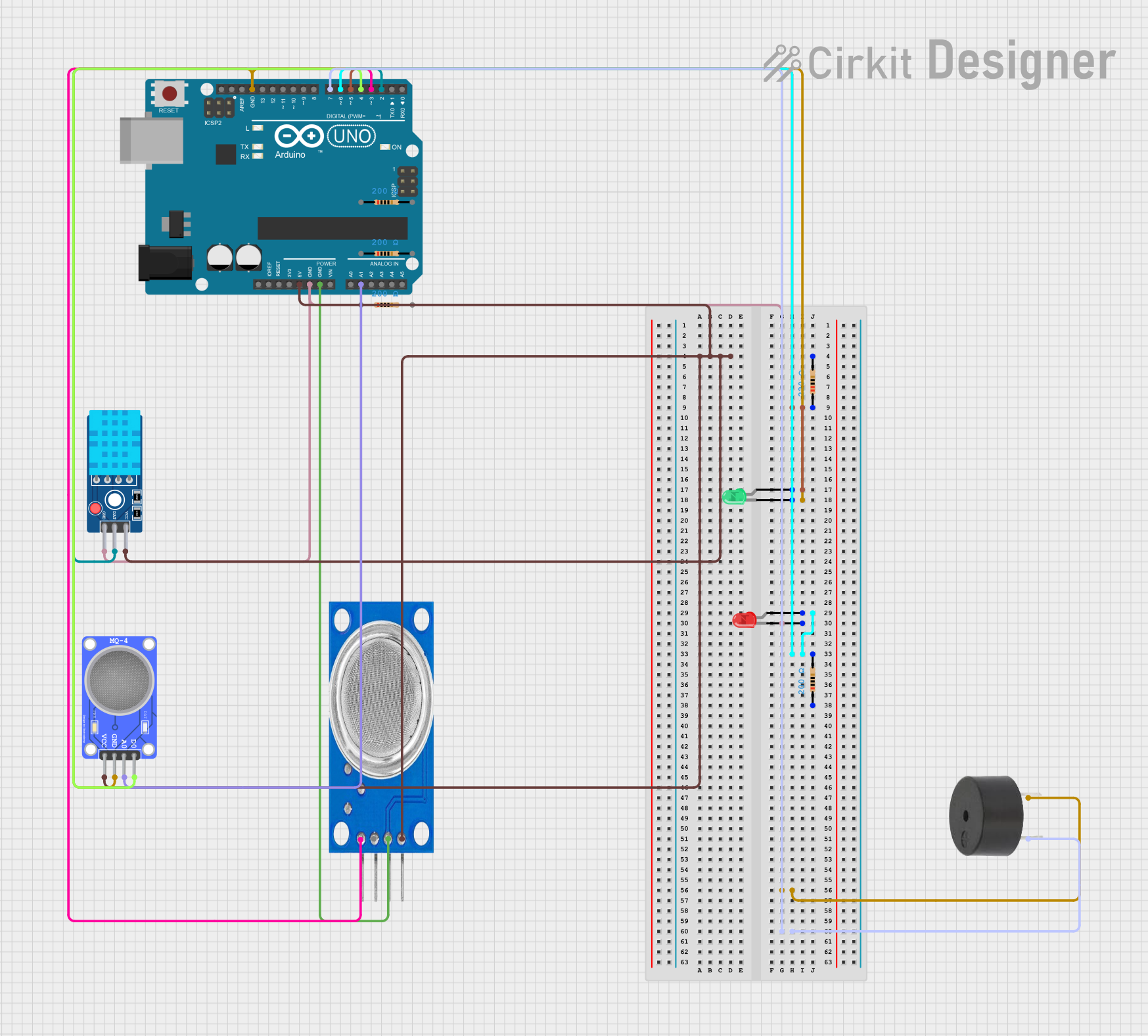
 Open Project in Cirkit Designer
Open Project in Cirkit DesignerExplore Projects Built with ZE07 H2 Gas Sensor

 Open Project in Cirkit Designer
Open Project in Cirkit Designer
 Open Project in Cirkit Designer
Open Project in Cirkit Designer
 Open Project in Cirkit Designer
Open Project in Cirkit Designer
 Open Project in Cirkit Designer
Open Project in Cirkit DesignerCommon Applications
- Hydrogen leak detection in industrial environments
- Battery monitoring systems (e.g., hydrogen detection in lead-acid batteries)
- Environmental monitoring for hydrogen gas emissions
- Safety systems in laboratories and research facilities
- Gas detection in fuel cell applications
Technical Specifications
The ZE07 H2 Gas Sensor is designed for ease of integration and reliable performance. Below are its key technical details:
General Specifications
| Parameter | Value |
|---|---|
| Detection Gas | Hydrogen (H2) |
| Detection Range | 0–1000 ppm |
| Operating Voltage | 3.7–5.5 V DC |
| Output Signal | UART (3.3V TTL) and Analog |
| Response Time | ≤ 30 seconds |
| Recovery Time | ≤ 60 seconds |
| Operating Temperature | -20°C to 50°C |
| Operating Humidity | 15%–90% RH (non-condensing) |
| Power Consumption | ≤ 0.5 W |
| Dimensions | 32 mm × 20 mm × 10 mm |
| Weight | ~5 g |
Pin Configuration
The ZE07 H2 Gas Sensor has a 4-pin interface for easy connection. The pinout is as follows:
| Pin Number | Pin Name | Description |
|---|---|---|
| 1 | VCC | Power supply input (3.7–5.5 V DC) |
| 2 | GND | Ground |
| 3 | UART_TX | UART data output (3.3V TTL level) |
| 4 | AOUT | Analog voltage output proportional to H2 gas |
Usage Instructions
Connecting the Sensor
- Power Supply: Connect the
VCCpin to a 3.7–5.5 V DC power source and theGNDpin to ground. - Signal Output:
- For digital communication, connect the
UART_TXpin to the RX pin of a microcontroller (e.g., Arduino). - For analog readings, connect the
AOUTpin to an analog input pin of the microcontroller.
- For digital communication, connect the
- Warm-Up Time: Allow the sensor to warm up for at least 3 minutes after powering it on to ensure accurate readings.
Important Considerations
- Placement: Install the sensor in a location with good airflow to ensure accurate gas detection.
- Calibration: The sensor is factory-calibrated, but periodic recalibration may be required for long-term accuracy.
- Power Supply: Use a stable power source to avoid fluctuations in readings.
- Avoid Contaminants: Keep the sensor away from corrosive gases, high humidity, and dust to prevent damage.
Example: Using ZE07 H2 with Arduino UNO
Below is an example of how to interface the ZE07 H2 Gas Sensor with an Arduino UNO using the UART interface:
// Example code for interfacing ZE07 H2 Gas Sensor with Arduino UNO
// This code reads hydrogen gas concentration via UART and prints it to the Serial Monitor.
#include <SoftwareSerial.h>
// Define RX and TX pins for SoftwareSerial
SoftwareSerial mySerial(10, 11); // RX = 10, TX = 11
void setup() {
Serial.begin(9600); // Initialize Serial Monitor at 9600 baud
mySerial.begin(9600); // Initialize SoftwareSerial at 9600 baud
Serial.println("ZE07 H2 Gas Sensor Initialized");
}
void loop() {
if (mySerial.available()) { // Check if data is available from the sensor
String data = ""; // Variable to store sensor data
while (mySerial.available()) {
char c = mySerial.read(); // Read each character from the sensor
data += c; // Append character to the data string
}
Serial.print("H2 Concentration: ");
Serial.println(data); // Print the hydrogen concentration
}
delay(1000); // Wait 1 second before the next reading
}
Notes:
- Connect the
UART_TXpin of the sensor to pin 10 (RX) of the Arduino UNO. - Ensure the Arduino and sensor share a common ground (GND).
- Use a logic level shifter if the Arduino operates at 5V logic levels.
Troubleshooting and FAQs
Common Issues and Solutions
No Output from the Sensor
- Cause: Incorrect wiring or loose connections.
- Solution: Double-check the wiring and ensure all connections are secure.
Inaccurate Readings
- Cause: Insufficient warm-up time or unstable power supply.
- Solution: Allow the sensor to warm up for at least 3 minutes and use a stable power source.
Sensor Not Responding to Gas
- Cause: Sensor may be damaged or exposed to contaminants.
- Solution: Inspect the sensor for physical damage and ensure it is not exposed to corrosive gases or high humidity.
UART Communication Issues
- Cause: Incorrect baud rate or wiring.
- Solution: Verify that the baud rate is set to 9600 and check the RX/TX connections.
FAQs
Q: Can the ZE07 H2 Gas Sensor detect gases other than hydrogen?
A: No, the ZE07 H2 is specifically calibrated for hydrogen gas detection and may not provide accurate readings for other gases.
Q: How often should the sensor be calibrated?
A: The sensor is factory-calibrated, but it is recommended to recalibrate it every 6–12 months for optimal accuracy.
Q: Can I use the sensor outdoors?
A: The sensor can operate in outdoor environments, but it should be protected from direct exposure to rain, high humidity, and dust.
Q: What is the lifespan of the ZE07 H2 Gas Sensor?
A: The typical lifespan of the sensor is 2–3 years under normal operating conditions.
Q: Is the sensor compatible with 5V logic microcontrollers?
A: Yes, the sensor's UART output is 3.3V TTL, which is compatible with most 5V logic microcontrollers. However, a logic level shifter may be used for added safety.
By following this documentation, users can effectively integrate and operate the ZE07 H2 Gas Sensor in their projects.